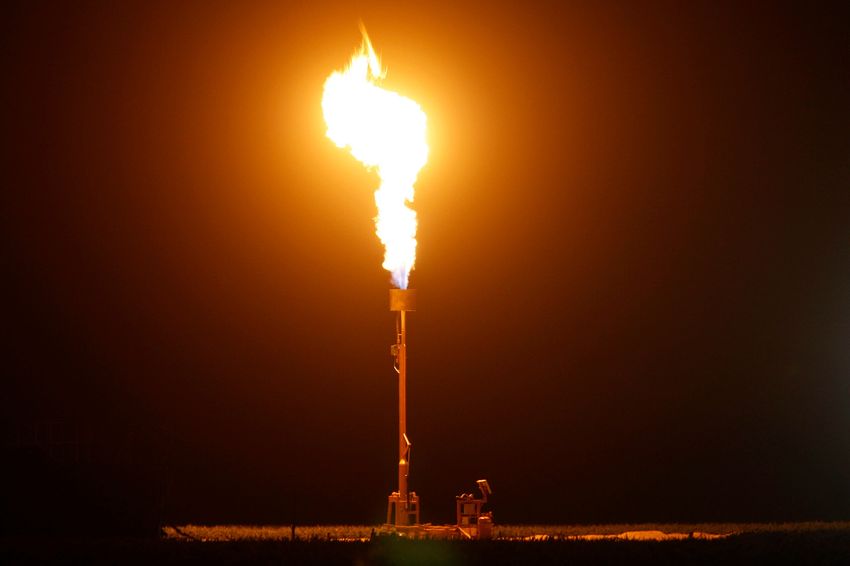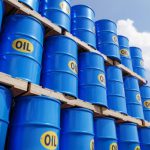Introduction
Oil and natural gas have powered modern civilization for over a century, fueling transportation, industry, and electricity generation. But how did these fossil fuels form, and why are they considered non-renewable resources?
This article explores the geological processes behind oil and gas formation, the role of chemical engineering in extraction and refining, and the future of energy in a changing world. 🔬⏳
1. What Are Fossil Fuels? The Basics of Oil & Gas ⛽
🔬 Definition
Fossil fuels (oil, natural gas, and coal) are hydrocarbon-based energy sources formed from the remains of ancient plants and microorganisms over millions of years.
🔹 Types of Fossil Fuels:
✅ Crude Oil (Petroleum) – Liquid hydrocarbons refined into gasoline, diesel, and jet fuel.
✅ Natural Gas – Mostly methane (CH₄), used for heating, cooking, and power generation.
✅ Coal – A solid fossil fuel formed from ancient plants, used in power plants and steelmaking.
💡 Key Fact: 85% of the world’s energy still comes from fossil fuels!
2. How Oil & Gas Form: The Geological Process 🏞️
🔹 1. Organic Matter Accumulates (Millions of Years Ago) 🌊🌿
✅ Dead marine plankton, algae, and microorganisms settle at the bottom of ancient seas and lakes.
✅ Over time, this organic material mixes with mud and silt, forming thick sediment layers.
💡 Why Not Dinosaurs? Despite myths, oil and gas come from microscopic marine life, not dinosaurs!
🔹 2. Burial & Sediment Compression (Over Millions of Years) ⏳
✅ Layers of sediment build up over time, burying organic matter under intense pressure and heat.
✅ This removes oxygen, preventing decomposition and leading to kerogen formation (a precursor to oil).
🔹 3. Heat & Pressure Convert Kerogen into Oil & Gas 🔥
✅ At 50–150°C (122–302°F), kerogen breaks down into liquid oil (this is called the “oil window”).
✅ At above 150°C (302°F), oil further breaks down into natural gas (methane and other light hydrocarbons).
💡 Geological Timeframe: Oil and gas formation takes 50 to 300 million years!
🔹 4. Trapping Oil & Gas in Reservoirs 🛢️
✅ Oil and gas migrate upwards through porous rocks.
✅ If trapped by impermeable rock layers (cap rock), they accumulate in reservoirs—ready for extraction.
💡 Where Are the Biggest Reserves?
- Saudi Arabia, Russia, USA – Top oil producers.
- USA, Russia, Iran – Largest natural gas reserves.
3. Extracting Oil & Gas: Engineering the Energy Industry 🏗️
Once oil and gas are trapped underground, they must be extracted and processed.
🔹 1. Conventional Drilling (Easier Extraction) 🏭
✅ Vertical wells tap into underground oil reservoirs.
✅ Pumps (like “nodding donkeys”) extract the crude oil.
🔹 2. Unconventional Drilling (For Harder-to-Reach Oil & Gas) 🔄
✅ Hydraulic Fracturing (Fracking) – Injecting high-pressure water and chemicals into rocks to release trapped oil and gas.
✅ Offshore Drilling – Extracting oil from under the ocean floor using massive floating platforms.
💡 Environmental Concern: Fracking and offshore drilling raise water contamination and earthquake risks.
4. Refining: Turning Crude Oil into Useful Products 🛢️🔬
Crude oil is not directly usable—it must be refined through fractional distillation.
🔹 Fractional Distillation: Separating Hydrocarbons by Boiling Point 🌡️
1️⃣ Crude oil is heated to 400°C (750°F) in a distillation tower.
2️⃣ Hydrocarbons separate into layers based on boiling points:
- Lightest (Gasoline, Propane) → Top
- Medium (Diesel, Kerosene) → Middle
- Heaviest (Lubricants, Asphalt) → Bottom
💡 Efficiency Boosters: Catalytic cracking and reforming improve fuel quality and yield.
🔹 Key Products from Crude Oil:
✅ Gasoline – Powers cars and trucks.
✅ Diesel & Jet Fuel – Used in airplanes, ships, and trains.
✅ Petrochemicals – Raw materials for plastics, pharmaceuticals, and cosmetics.
5. The Future of Oil & Gas: Decline or Innovation? 🌍⚡
🔹 Environmental Challenges & Climate Change 🌱
❌ Fossil fuel combustion releases CO₂, contributing to global warming.
❌ Oil spills and fracking harm ecosystems.
❌ Many countries are transitioning to renewable energy.
🔹 Innovations for a Cleaner Future 🔬⚡
✅ Carbon Capture & Storage (CCS) – Trapping CO₂ before it enters the atmosphere.
✅ Green Hydrogen & Biofuels – Reducing dependence on fossil fuels.
✅ Enhanced Oil Recovery (EOR) – Injecting CO₂ into reservoirs to extract more oil while storing emissions.
💡 Will Oil Ever Run Out?
- Oil reserves could last 50 years, natural gas 60 years, but new discoveries and alternatives may extend supply.
🔹 Transition to Renewables: The Future of Energy ☀️🌬️
🚀 Solar & Wind Power – Growing rapidly, reducing fossil fuel use.
🔋 Electric Vehicles (EVs) – Replacing gasoline cars with battery-powered alternatives.
💡 Hybrid Energy Models – Oil and renewables may coexist for decades, ensuring a smooth transition.
Conclusion 🏁
Oil and gas are the result of millions of years of geological processes, shaping modern civilization and industry. While they remain essential today, the future is shifting toward cleaner, sustainable energy sources.
🌍 As technology advances, chemical engineers will play a key role in balancing fossil fuel use with environmental responsibility and energy innovation! 🚀🔬


